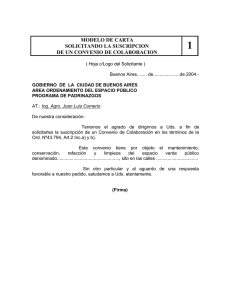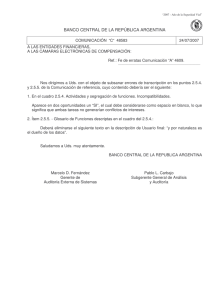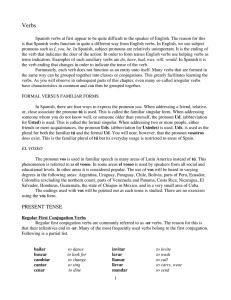El pretérito de los verbos irregulares (p. 31) puse
Anuncio
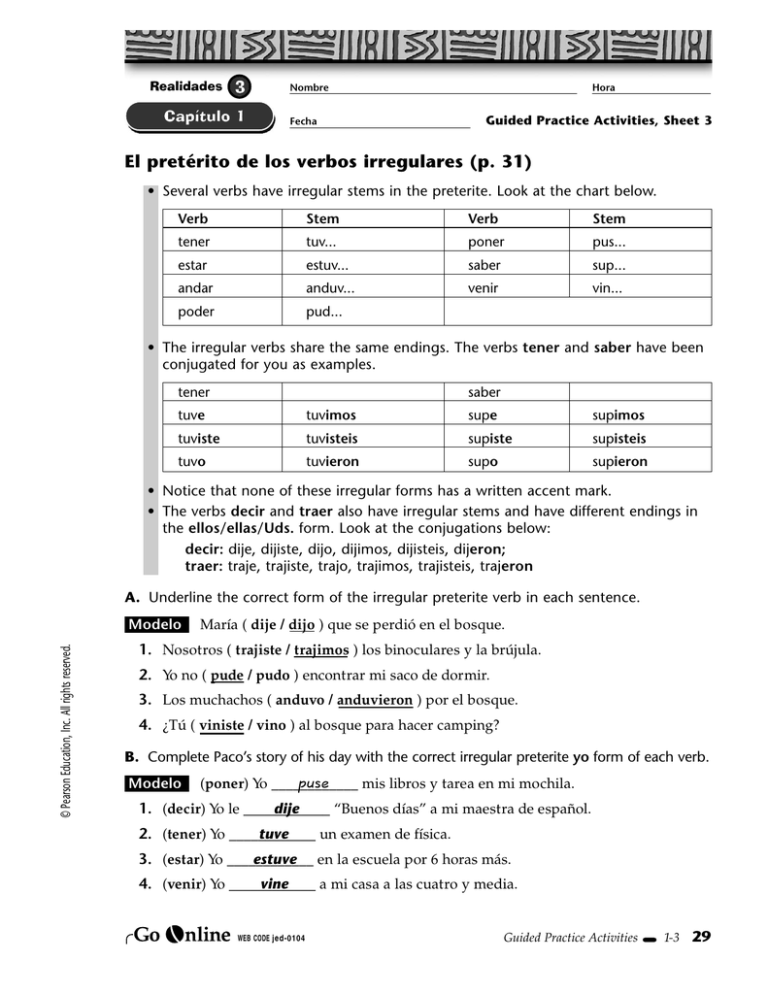
Realidades Nombre Fecha Hora Guided Practice Activities, Sheet 3 El pretérito de los verbos irregulares (p. 31) • Several verbs have irregular stems in the preterite. Look at the chart below. Verb Stem Verb Stem tener tuv... poner pus... estar estuv... saber sup... andar anduv... venir vin... poder pud... • The irregular verbs share the same endings. The verbs tener and saber have been conjugated for you as examples. tener saber tuve tuvimos supe supimos tuviste tuvisteis supiste supisteis tuvo tuvieron supo supieron • Notice that none of these irregular forms has a written accent mark. • The verbs decir and traer also have irregular stems and have different endings in the ellos/ellas/Uds. form. Look at the conjugations below: decir: dije, dijiste, dijo, dijimos, dijisteis, dijeron; traer: traje, trajiste, trajo, trajimos, trajisteis, trajeron A. Underline the correct form of the irregular preterite verb in each sentence. © Pearson Education, Inc. All rights reserved. Modelo: María ( dije / dijo ) que se perdió en el bosque. 1. Nosotros ( trajiste / trajimos ) los binoculares y la brújula. 2. Yo no ( pude / pudo ) encontrar mi saco de dormir. 3. Los muchachos ( anduvo / anduvieron ) por el bosque. 4. ¿Tú ( viniste / vino ) al bosque para hacer camping? B. Complete Paco’s story of his day with the correct irregular preterite yo form of each verb. Modelo: puse (poner) Yo ____________ mis libros y tarea en mi mochila. dije 1. (decir) Yo le ____________ “Buenos días” a mi maestra de español. tuve 2. (tener) Yo ____________ un examen de física. estuve en la escuela por 6 horas más. 3. (estar) Yo ____________ vine 4. (venir) Yo ____________ a mi casa a las cuatro y media. WEB CODE jed- 0104 Guided Practice Activities 1-3 29 Realidades Nombre Hora Guided Practice Activities, Sheet 4 Fecha C. A teacher asks her students about their weekend activities. Complete her questions with the Uds. form of the verb and the students’ answers with the nosotros form. Follow the model. Modelo: (andar) Uds. _______________ anduvieron por el bosque, ¿no? Sí, _______________ anduvimos por el bosque. 1. (poder) Uds. _______________ jugar unos deportes, ¿no? pudieron Sí, _______________ jugar al bésibol y al hockey. pudimos 2. (tener) Uds. _______________ que limpiar sus cuartos, ¿no? tuvieron Sí, _______________ que limpiarlos. tuvimos 3. (venir) Uds. _______________ a ver la obra de teatro estudiantil, ¿no? vinieron Sí, _______________ a verla. vinimos 4. (saber) Uds. _______________ lo que le pasó a Jorge ayer, ¿no? supieron Sí, lo _______________. supimos 5. (decir) Uds. me _______________ todo lo que hicieron, ¿no? dijeron Sí, se le _______________ todo. dijimos D. First, identify the pictures. Then, use the pictures and verbs in the preterite to create complete sentences about what people did in the past. Follow the model. Modelo: Mario / estar / ______ / por tres horas Mario estuvo en la tienda de acampar por tres horas. mis amigos y yo / poder ver / ______ / impresionante / anoche ____________________________________________________________ Mis amigos y yo pudimos ver el paisaje impresionante anoche. 2. Ana y Felipe / andar por / ______ / durante todo el día ____________________________________________________________ Ana y Felipe anduvieron por el bosque durante todo el día. 3. tú / poner / ______ / en la mochila ____________________________________________________________ Tú pusiste la brújula en la mochila. 4. Yo / traer / ______ / para ver el sendero Yo traje la linterna para ver el sendero. ____________________________________________________________ 30 Guided Practice Activities 1-4 WEB CODE jed- 0104 © Pearson Education, Inc. All rights reserved. 1.
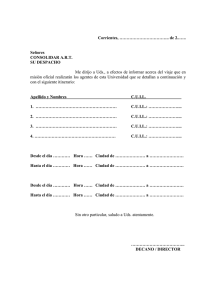
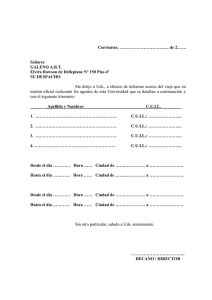
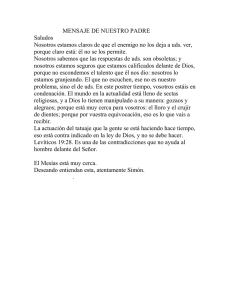
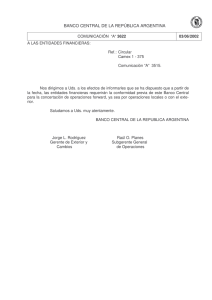
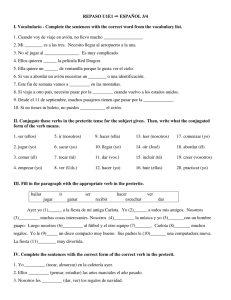
![[b]COMUNICACION C 44049](http://s2.studylib.es/store/data/002781377_1-7598c32e972361df8134767ee017892f-300x300.png)
